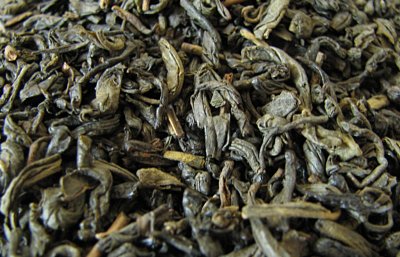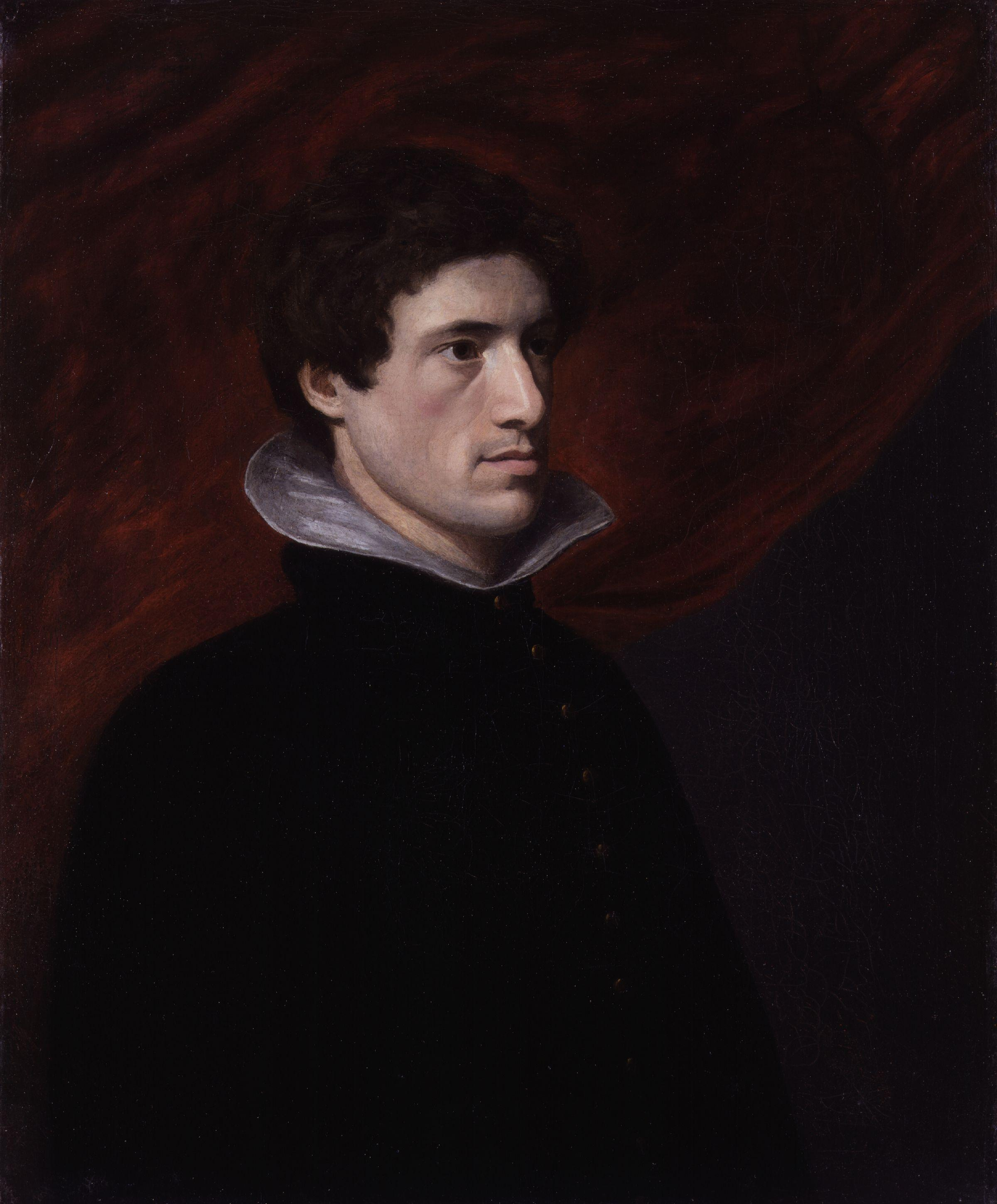|
Hyson
Hyson, or Lucky Dragon Tea, is a Chinese green tea that comes from the Anhui province of China. It is made from young leaves that are thinly rolled to have a long, twisted appearance that unfurls when brewed. The name Hyson is probably derived from an Amoy name (), although there are also anecdotal claims that it was named after an English tea merchant, Phillip Hyson. Hyson is graded into the following three categories: Mi Si, Cheng Si and Fu Si. While hyson tea is often thought of as a low-grade or mediocre quality tea, young hyson is considered high quality. It is harvested earlier, "before the rains," and has a full-bodied, pungent taste and is golden in color. Young hyson tea is subdivided into Chun Mee (a hard, small, twisted leaf), Foong Mee (a long, large, curly leaf), Saw Mee (a small, non-hard, twisted leaf), and Siftings. It is also sometimes classified as First, Second, and Third Young Hyson. The Chinese name for young hyson is Yu Chin Ch'a and is categorized as the ... [...More Info...] [...Related Items...] OR: [Wikipedia] [Google] [Baidu] |
Green Tea
Green tea is a type of tea that is made from '' Camellia sinensis'' leaves and buds that have not undergone the same withering and oxidation process which is used to make oolong teas and black teas. Green tea originated in China, and since then its production and manufacture has spread to other countries in East Asia. Several varieties of green tea exist, which differ substantially based on the variety of ''C. sinensis'' used, growing conditions, horticultural methods, production processing, and time of harvest. The two main components unique to green tea are "catechins" and "theanine," and the health effects of these components are attracting a great deal of attention in Japan and abroad. History Tea consumption has its legendary origins in China during the reign of mythological Emperor Shennong. A book written by Lu Yu in 618–907 AD (Tang dynasty), ''The Classic of Tea'' (), is considered important in green tea history. The ''Kissa Yōjōki'' (喫茶養生記 ''Book ... [...More Info...] [...Related Items...] OR: [Wikipedia] [Google] [Baidu] |
China
China, officially the People's Republic of China (PRC), is a country in East Asia. It is the world's most populous country, with a population exceeding 1.4 billion, slightly ahead of India. China spans the equivalent of five time zones and borders fourteen countries by land, the most of any country in the world, tied with Russia. Covering an area of approximately , it is the world's third largest country by total land area. The country consists of 22 provinces, five autonomous regions, four municipalities, and two Special Administrative Regions (Hong Kong and Macau). The national capital is Beijing, and the most populous city and financial center is Shanghai. Modern Chinese trace their origins to a cradle of civilization in the fertile basin of the Yellow River in the North China Plain. The semi-legendary Xia dynasty in the 21st century BCE and the well-attested Shang and Zhou dynasties developed a bureaucratic political system to serve hereditary monarchies, or dyna ... [...More Info...] [...Related Items...] OR: [Wikipedia] [Google] [Baidu] |
Green Tea
Green tea is a type of tea that is made from '' Camellia sinensis'' leaves and buds that have not undergone the same withering and oxidation process which is used to make oolong teas and black teas. Green tea originated in China, and since then its production and manufacture has spread to other countries in East Asia. Several varieties of green tea exist, which differ substantially based on the variety of ''C. sinensis'' used, growing conditions, horticultural methods, production processing, and time of harvest. The two main components unique to green tea are "catechins" and "theanine," and the health effects of these components are attracting a great deal of attention in Japan and abroad. History Tea consumption has its legendary origins in China during the reign of mythological Emperor Shennong. A book written by Lu Yu in 618–907 AD (Tang dynasty), ''The Classic of Tea'' (), is considered important in green tea history. The ''Kissa Yōjōki'' (喫茶養生記 ''Book ... [...More Info...] [...Related Items...] OR: [Wikipedia] [Google] [Baidu] |
Anhui
Anhui , (; formerly romanized as Anhwei) is a landlocked province of the People's Republic of China, part of the East China region. Its provincial capital and largest city is Hefei. The province is located across the basins of the Yangtze River and the Huai River, bordering Jiangsu to the east, Zhejiang to the southeast, Jiangxi to the south, Hubei to the southwest, Henan to the northwest, and Shandong for a short section in the north. With a population of 63.65 million, Anhui is the 8th most populous province in China. It is the 22nd largest Chinese province based on area, and the 12th most densely-populated region of all 34 Chinese provincial regions. Anhui's population is mostly composed of Han Chinese. Languages spoken within the province include Jianghuai Mandarin, Wu, Hui, Gan and small portion of Zhongyuan Mandarin Chinese. The name "Anhui" derives from the names of two cities: Anqing and Huizhou (now Huangshan City). The abbreviation for Anhui is "" after the histori ... [...More Info...] [...Related Items...] OR: [Wikipedia] [Google] [Baidu] |
Amoy
Xiamen ( , ; ), also known as Amoy (, from Hokkien pronunciation ), is a sub-provincial city in southeastern Fujian, People's Republic of China, beside the Taiwan Strait. It is divided into six districts: Huli, Siming, Jimei, Tong'an, Haicang, and Xiang'an. All together, these cover an area of with a population of 5,163,970 as of 2020 and estimated at 5.28 million as of 31 December 2021. The urbanized area of the city has spread from its original island to include most parts of all six of its districts, and with 4 Zhangzhou districts ( Xiangcheng, Longwen, Longhai and Changtai), form a built-up area of 7,284,148 inhabitants. This area also connects with Quanzhou in the north, making up a metropolis of nearly ten million people. The Kinmen Islands (Quemoy) administered by the Republic of China (Taiwan) which lie less than away separated by Xiamen Bay. As part of the Opening Up Policy under Deng Xiaoping, Xiamen became one of China's original four special economic zo ... [...More Info...] [...Related Items...] OR: [Wikipedia] [Google] [Baidu] |
Chun Mee Tea
Chun Mee (; pronounced ) is a popular green tea. It has a dusty appearance and is generally more acidic and less sweet than other green teas. It was originally produced only in the Chinese Jiangxi province, but is nowadays also grown elsewhere. The tea is divided into several grades with numbers. Some examples are: 41022, 4011, 9371, 8147, 9367, 9366, 3008 or 3009. The number 41022 in this case represents the highest quality, while number 8147 practically only consists of broken leaves. Chun mee tea, together with Assam Bukial tea, has been studied to observe the rate of infusion of caffeine. The study found that caffeine diffusion through the tea leaves is a greatly hindered process. See also * Green tea * List of Chinese teas This is a list of Chinese teas. Chinese tea is a beverage made from the leaves of tea plants (''Camellia sinensis'') and – depending on the type of tea – typically 60–100 °C hot water. Tea leaves are processed using traditional Chi ... ... [...More Info...] [...Related Items...] OR: [Wikipedia] [Google] [Baidu] |
Boston Tea Party
The Boston Tea Party was an American political and mercantile protest by the Sons of Liberty in Boston, Massachusetts, on December 16, 1773. The target was the Tea Act of May 10, 1773, which allowed the British East India Company to sell tea from China in American colonies without paying taxes apart from those imposed by the Townshend Acts. The Sons of Liberty strongly opposed the taxes in the Townshend Act as a violation of their rights. Protesters, some disguised as Indigenous Americans, destroyed an entire shipment of tea sent by the East India Company. The demonstrators boarded the ships and threw the chests of tea into the Boston Harbor. The British government considered the protest an act of treason and responded harshly. The episode escalated into the American Revolution, becoming an iconic event of American history. Since then other political protests such as the Tea Party movement have referred to themselves as historical successors to the Boston protest of 1773. T ... [...More Info...] [...Related Items...] OR: [Wikipedia] [Google] [Baidu] |
Ralph Waldo Emerson
Ralph Waldo Emerson (May 25, 1803April 27, 1882), who went by his middle name Waldo, was an American essayist, lecturer, philosopher, abolitionist, and poet who led the transcendentalist movement of the mid-19th century. He was seen as a champion of individualism and a prescient critic of the countervailing pressures of society, and his ideology was disseminated through dozens of published essays and more than 1,500 public lectures across the United States. Emerson gradually moved away from the religious and social beliefs of his contemporaries, formulating and expressing the philosophy of transcendentalism in his 1836 essay "Nature". Following this work, he gave a speech entitled "The American Scholar" in 1837, which Oliver Wendell Holmes Sr. considered to be America's "intellectual Declaration of Independence."Richardson, p. 263. Emerson wrote most of his important essays as lectures first and then revised them for print. His first two collections of essays, '' Essays: Firs ... [...More Info...] [...Related Items...] OR: [Wikipedia] [Google] [Baidu] |
Charles Lamb
Charles Lamb (10 February 1775 – 27 December 1834) was an English essayist, poet, and antiquarian, best known for his ''Essays of Elia'' and for the children's book ''Tales from Shakespeare'', co-authored with his sister, Mary Lamb (1764–1847). Friends with such literary luminaries as Samuel Taylor Coleridge, Robert Southey, William Wordsworth, and William Hazlitt, Lamb was at the centre of a major literary circle in England. He has been referred to by E. V. Lucas, his principal biographer, as "the most lovable figure in English literature". Youth and schooling Lamb was born in London, the son of John Lamb (–1799) and Elizabeth (died 1796), née Field. Lamb had an elder brother and sister; four other siblings did not survive infancy. John Lamb was a lawyer's clerk and spent most of his professional life as the assistant to a barrister named Samuel Salt, who lived in the Inner Temple in the legal district of London; it was there, in Crown Office Row, that Charles Lamb ... [...More Info...] [...Related Items...] OR: [Wikipedia] [Google] [Baidu] |
Essays Of Elia
''Essays of Elia'' is a collection of essays written by Charles Lamb; it was first published in book form in 1823, with a second volume, ''Last Essays of Elia'', issued in 1833 by the publisher Edward Moxon. The essays in the collection first began appearing in ''The London Magazine'' in 1820 and continued to 1825. Lamb's essays were very popular and were printed in many subsequent editions throughout the nineteenth century. The personal and conversational tone of the essays has charmed many readers; the essays "established Lamb in the title he now holds, that of the most delightful of English essayists." Lamb himself is the Elia of the collection, and his sister Mary is "Cousin Bridget." Charles first used the pseudonym Elia for an essay on the South Sea House, where he had worked decades earlier; Elia was the last name of an Italian man who worked there at the same time as Charles, and after that essay the name stuck. American editions of both the ''Essays'' and the ''Last Es ... [...More Info...] [...Related Items...] OR: [Wikipedia] [Google] [Baidu] |
.jpg)




